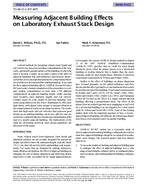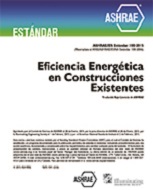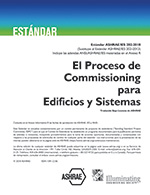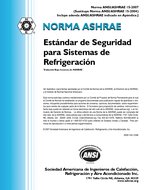Description
Current methods for designing exhaust stack height and exit velocity are based on avoiding contamination of the roof, walls, and nearby ground surface of the building on which the stack is located. Usually, no account is taken of the effect of adjacent buildings that add turbulence and increase dispersion if they are located upwind and may be contaminated themselves if they are downwind of the emitting building. To account for these adjacent building effects, ASHRAE Research Project 897 used water-channel simulation of the atmosphere to evaluate rooftop contamination in more than 1,700 different configurations of adjacent building height, width, spacing, stack location, stack diameter, height, and exit velocity. Exhaust stacks on scale models of flat-roof buildings were tested using fluorescent dye tracer illuminated by thin laser light sheets, with digital video images to measure dilution in the exhaust plume at roof level air intake locations. The results show that high stacks and exit velocities that represent good design on an emitting building can be less effective and are sometimes counterproductive in reducing contamination of the roof of a nearby adjacent building. The implications of the study for developing practical stack design guidelines are discussed in this paper.
Units: Dual
Citation: Symposium, ASHRAE Transactions, 1998, Vol. 104, Part 2, Toronto, ON
Product Details
- Published:
- 1998
- Number of Pages:
- 17
- File Size:
- 1 file , 380 KB
- Product Code(s):
- D-7740




